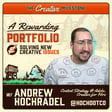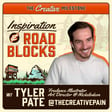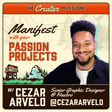
Creating a Case Study with Nick Longo
A case study is more important than you might think—it’s a chance to showcase your problem-solving process, creative thinking, and the impact of your designs. There’s a story here, you just have to find it!
In our second episode of The Creative Milestone, we sit down with creative leader & professor of design at CSUN, Nick Longo. Nick shares with us stories from early in his career, the trends he’s noticed when students enter the graphic design industry, and all the components you need for a strong portfolio case study. If you're looking for advice to improve the presentation of your work, this is the episode for you.
Make sure you follow @creativemilestone and our guest, @longodesigns and his own design pod, @dgdcpod !
Nick's Case Study Template: https://www.behance.net/gallery/211569993/The-New-Case-Study




